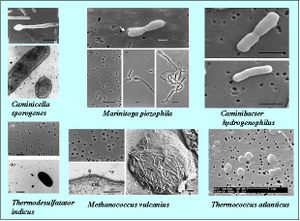Xylaria hypoxylon: Difference between revisions
| Line 19: | Line 19: | ||
==References== | ==References== | ||
[1] | [1]First Nature. Xylaria hypoxylon (L.) Grev. - Candlesnuff Fungus http://www.first-nature.com/fungi/xylaria-hypoxylon.php | ||
[2]Horst RK, Westcott C. (2001). Westcott's plant disease handbook. Boston: Kluwer Academic Publishers. p. 533. ISBN 0-7923-8663-9. Retrieved 2009-12-21. | |||
[3] | |||
==Author== | ==Author== | ||
Revision as of 13:43, 22 July 2013
Classification
Domain/Superkingdom/Kingdom; Phylum; Class; Order; Family [Others may be used. Use NCBI link to find]
Genus Species
Description and Significance
The scientific name of “Xylaria hypoxylon” was given to this ascomycetous fungus by Carl Linnaeus in 1753, Synonyms of “Xylaria hypoxylon” include Clavaria hypoxylon L., Sphaeria hypoxylon (L.) Pers. Sphaeria ramosa Dicks and Xylosphaera hypoxylon (L.) Dumort. Xylaria hypoxylon, commonly called the Candlesnuff Fungus is a fungus in the genus Xylaria.[1] The fruit bodies, characterized by erect, elongated black branches with whitened tips, typically grow in clusters on decaying hardwood. The fungus can cause a root rot in hawthorn and gooseberry plants.[2]
Structure, Metabolism, and Life Cycle
Interesting features of its structure; how it gains energy (how it replicates, if virus); what important molecules it produces (if any), does it have an interesting life cycle?
Ecology and Pathogenesis
Natural habitat (soil, water, commensal of humans or animals?)
If relevant, how does this organism cause disease? Human, animal, or plant hosts? Important virulence factors, as well as patient symptoms.
References
[1]First Nature. Xylaria hypoxylon (L.) Grev. - Candlesnuff Fungus http://www.first-nature.com/fungi/xylaria-hypoxylon.php [2]Horst RK, Westcott C. (2001). Westcott's plant disease handbook. Boston: Kluwer Academic Publishers. p. 533. ISBN 0-7923-8663-9. Retrieved 2009-12-21. [3]
Author
Page authored by _____, student of Mandy Brosnahan, Instructor at the University of Minnesota-Twin Cities, MICB 3301/3303: Biology of Microorganisms.

